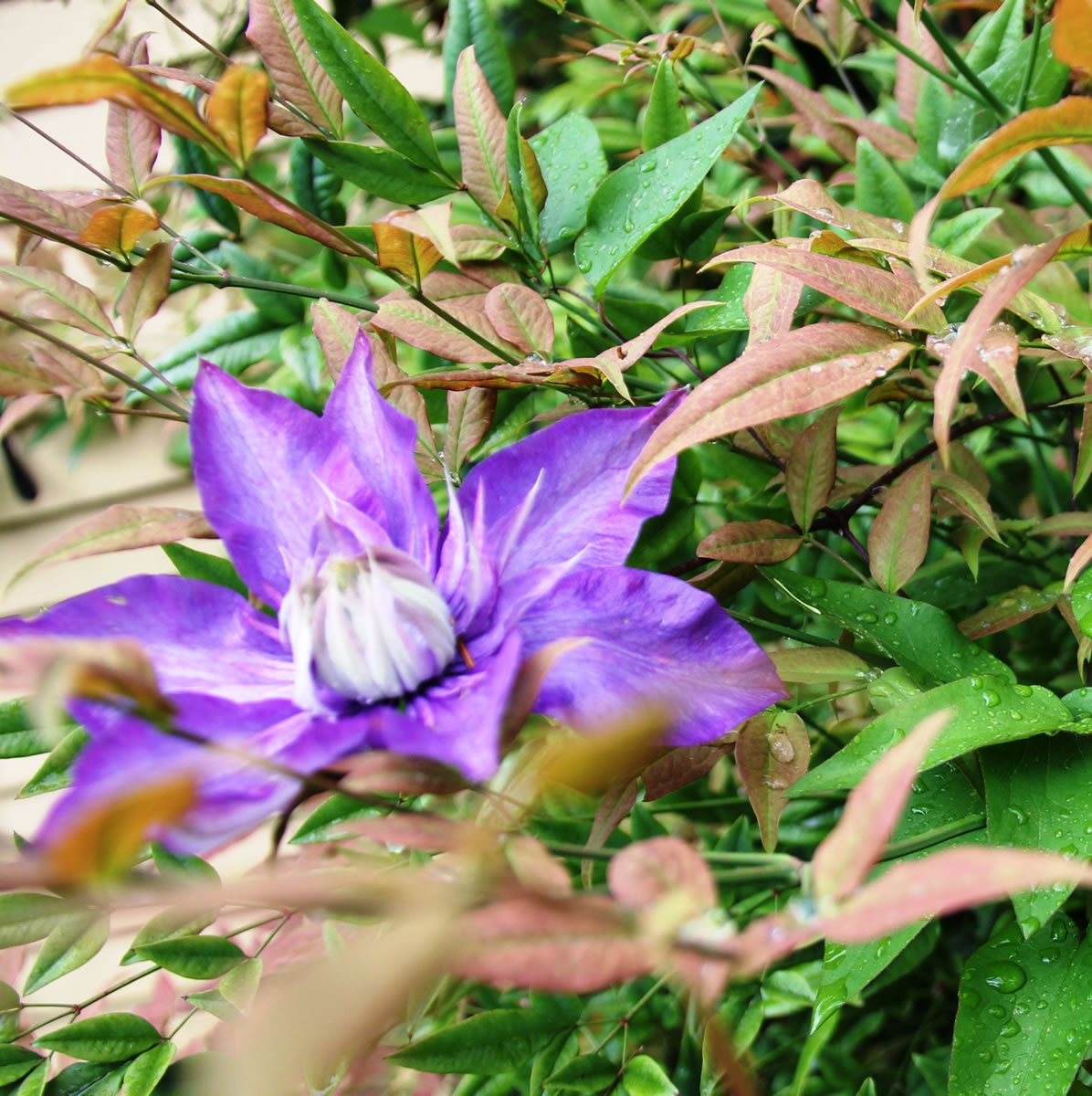Yesterday was glorious; today is bleak. Who knows what tomorrow will bring. The autumn season in the Northwest is unlike any other in the country. While parts of America are having a heat wave and others are dealing with a 50-degree weather drop, our fall season is long, variable and comparably mild. Without a calendar, it would be hard to tell where autumn ends and winter begins.
Roses are still blooming and on clear days the warm sunlight reflects off the faces of winter pansies. But it is late in the autumn season and despite any life still left in the garden, we need to take care of certain jobs before first frost. Our first concern is to protect tender plants and tuck marginally hardy perennials into their garden beds.
If you want to try overwintering tender plants in their borders, protect the soil around the plant from freezing by covering the crown of the plant with a thick layer of straw or bark dust. Leave some of the old stems on the plant for extra protection. They will most likely die back but not necessarily all the way into the crown. Add a layer of organic mulch or compost over the entire border for an additional level of protection.
Our goal is to keep the plants in a state of dormancy through the winter without allowing the roots to freeze or the soil to heave around the roots. Our natural winter rain should take care of watering needs but we still need to check these plants periodically for water. They should be moist but well-drained, so they are not standing in water. This applies to perennials, needle-leaved evergreens, broad-leaved evergreens and trees that were planted out in the garden this fall.
At the same time, there are certain fully hardy plants we can add to the garden this late in the year. I stopped at a garden center the other day and found a few packages of bulbs that I have considered planting but have rarely seen outside of a catalog. I bought them on the spot. Since our winters are fairly mild, we can still plant bulbs in the ground or in large pots in time for a spring show.
If you plant hardy bulbs too late in the season, the worst thing that is likely to happen is that they will not bloom the first year. Tulips and daffodils are less prolific if planted too late in the season. On the other hand, all bulbs will do better in the ground than if you leave them in a package unplanted. Once planted they will eventually get in sync with their own nature and once established, flower the following spring.
The bulbs I bought at the nursery are considered minor bulbs. They are less dramatic and smaller than most tulips and daffodils but worthwhile as little surprises in the spring garden. Iris “Katherine Hodgkin” is an award-winning, small iris for the rock garden with blue-green standards and yellow-green falls with green-edged, yellow blotches. Fritillaria meleagris, also known as guinea hens, are petite naturalizers with checkered, bell-shaped flowers in varying shades of purple and white.
When to cut back hybrid tea roses for the winter and how much to cut them back are two of the most debated topics in the garden world. I think it helps if you understand why the question is debatable in the first place. In climates where winter is harsher than ours, roses are cut back hard once the weather turns cold and the plants stop growing. The purpose is to keep plants dormant and protected through the winter.
Our problem is mild autumn weather. If we were to cut back our roses too early in the fall, they would inevitably shoot out new growth which is more susceptible to cold weather. Once temperatures drop we can cut rose bushes down by about a third. For neatness’ sake and to prevent plants from whipping around in the wind, waist level is a standard suggestion. Now, even if new growth is caught by a freeze it will not die all the way to the crown of the rose.
Once spring has arrived and warm soil triggers new growth, we need to cut roses back to a point below knee level. This assures strong, robust canes that can support all the roses of spring, summer and early fall. The magic date for pruning in the Northwest is Presidents Day in February. As far away as that seems to be over the vast expanse of winter’s gloom, I’m looking forward to three months by a cozy fireside doing nothing more than perusing my garden catalogs.
Robb Rosser is a WSU-certified master gardener. Reach him at Write2Robb@aol.com.



